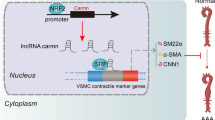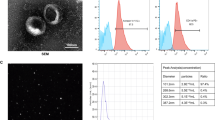Abstract
Primary cell cultures are essential tools for elucidating the physiopathological mechanisms of the cardiovascular system. Therefore, a primary culture growth protocol of cardiovascular smooth muscle cells (VSMCs) obtained from human abdominal aortas was standardized. Ten abdominal aorta samples were obtained from patients diagnosed with brain death who were organ and tissue donors with family consent. After surgical ablation to capture the aorta, the aortic tissue was removed, immersed in a Custodiol® solution, and kept between 2 and 8 °C. In the laboratory, in a sterile environment, the tissue was fragmented and incubated in culture plates containing an enriched culture medium (DMEM/G/10% fetal bovine serum, L-glutamine, antibiotics and antifungals) and kept in an oven at 37 °C and 5% CO2. The aorta was removed after 24 h of incubation, and the culture medium was changed every six days for twenty days. Cell growth was confirmed through morphological analysis using an inverted optical microscope (Nikon®) and immunofluorescence for smooth muscle alpha-actin and nuclei. The development of the VSMCs was observed, and from the twelfth day, differentiation, long cytoplasmic projections, and adjacent cell connections occurred. On the twentieth day, the morphology of the VSMCs was confirmed by actin fiber immunofluorescence, which is a typical characteristic of VSMCs. The standardization allowed VSMC growth and the replicability of the in vitro test, providing a protocol that mimics natural physiological environments for a better understanding of the cardiovascular system. Its use is intended for investigation, tissue bioengineering, and pharmacological treatments.



Similar content being viewed by others
Data availablity
The data that support the findings of this study are available from the corresponding author upon reasonable request. Some data may not be made available because of privacy or ethical restrictions.
References
Braithwaite B et al (2015) Endovascular strategy or open repair for ruptured abdominal aortic aneurysm: one-year outcomes from the IMPROVE randomized trial. Eur Heart J 36(31):2061–2069. https://doi.org/10.1093/eurheartj/ehv125
Carrillo López N et al (2017) Efecto de dosis suprafisiológicas de calcitriol sobre la expresión proteica de células de músculo liso vascular. Rev Osteoporos Metab Miner 9(4):130–138. https://doi.org/10.4321/s1889-836x2017000400005
Chen J-Y et al (2021) The influence of substrate stiffness on osteogenesis of vascular smooth muscle cells. Colloids Surf B Biointerfaces 197:111388. https://doi.org/10.1016/j.colsurfb.2020.111388
Dinardo CL et al (2012) Vascular smooth muscle cells exhibit a progressive loss of rigidity with serial culture passaging. Biorheology 49(5–6):365–373
Dinardo CL et al (2014) Variation of mechanical properties and quantitative proteomics of VSMC along the arterial tree. Am J Physiol Heart Circ Physiol 306(4):H505–H516. https://doi.org/10.1152/ajpheart.00655.2013
Gatti G et al (2020) Solução Custodiol®-HTK versus Cardioplegia Sanguínea Gelada em Cirurgia Coronária Isolada com Tempo de Pinçamento da Aorta Prolongado: Uma Análise de Propensão Pareada. Arq Bras Cardiol 115(2):241–250. https://doi.org/10.36660/abc.20190267
Kwartler CS, Zhou P, Kuang S, Duan X, Gong L, Milewicz DM (2016) Vascular smooth muscle cell isolation and culture from mouse aorta. Bio-Protoc 6(23):2045
Li G et al (2020) Ulinastatin inhibits the formation and progression of experimental abdominal aortic aneurysms. J Vasc Res 57(2):58–64. https://doi.org/10.1159/000504848
Liu Z et al (2015) Murine abdominal aortic aneurysm model by orthotopic allograft transplantation of elastase-treated abdominal aorta. J Vasc Surg 62(6):1607–161. e42. https://doi.org/10.1016/j.jvs.2014.05.019
Meekel JP et al (2018) An in vitro method to keep human aortic tissue sections functionally and structurally intact. Sci Rep 8(1):1–12. https://doi.org/10.1038/s41598-018-26549-4
Oosterhoff LA et al (2019) Characterization of endothelial and smooth muscle cells from different canine vessels. Front Physiol 10:101. https://doi.org/10.3389/fphys.2019.00101
Patel HJ, Deeb GM (2008) Ascending and arch aorta: pathology, natural history, and treatment. Circulation 118(2):188–195. https://doi.org/10.1161/CIRCULATIONAHA.107.690933
Sherifova S, Holzapfel GA (2019) Biomechanics of aortic wall failure with a focus on dissection and aneurysm: a review. Acta Biomater 99:1–17. https://doi.org/10.1016/j.actbio.2019.08.017
Torres-Fonseca M et al (2019) Fisiopatología del aneurisma de aorta abdominal: biomarcadores y nuevas dianas terapéuticas. Clínica e Investig En Arterioscler 31(4):166–177. https://doi.org/10.1016/j.arteri.2018.10.002
Vanerio N et al (2020) Development of an ex vivo aneurysm model for vascular device testing. ALTEX-Altern Animal Exp 37(1):110–120. https://doi.org/10.14573/altex.1906253
Zhong L et al (2019) SM22α (smooth muscle 22α) prevents aortic aneurysm formation by inhibiting smooth muscle cell phenotypic switching through suppressing reactive oxygen species/NF-κB (nuclear factor-κB). Arterioscler Thromb Vasc Biol 39(1):e10–e25. https://doi.org/10.1161/ATVBAHA.118.311917
Acknowledgements
Sources of Funding: The authors of this article are grateful to the São Paulo Research Foundation (FAPESP), FAEPA, and CAPES for funding this research.
Funding
Christiane Becari (2017/21539-7; 2018/23718-8), Mauricio S. Ribeiro (2019/11485-1), and Jessyca M. Barbosa (2019/21721-4) were supported by the São Paulo Research Foundation (FAPESP).
Author information
Authors and Affiliations
Corresponding author
Ethics declarations
Conflict of interest
The authors declare no conflicts of interest.
Ethical approval
The Research Ethics Committee of the Hospital das Clínicas, Faculty of Medicine of Ribeirão Preto, University of São Paulo (USP), defends the project under CAAE No. 82879518.6.0000.5440.
Informed consent
The informed consent obtained from the donor families participating in the study was expressed in writing through the Free and Informed Consent Term (FICT).
Additional information
Publisher's Note
Springer Nature remains neutral with regard to jurisdictional claims in published maps and institutional affiliations.
Supplementary Information
Below is the link to the electronic supplementary material.
Supplementary file 1: Videomicrograph of the morphological characterization and development of subconfluent VSMCs, showing proliferative and multinucleated myoblasts, showing typical spindle-shaped morphology with long projections connecting adjacent cells, and showing mitosis and phagocytosis. Cells were visualized and filmed under an inverted microscope (Axio Observer, LSM 780 MP). Image superimposition (merge) was performed using the ImageJ Fiji program. Bar = 50 µm. (n = 1). Author name and videographer: Carlos Alexandre Curylofo Corsi; Length (min): 01:11 and size (MB): 29.6 (AVI 30404 KB)
Rights and permissions
Springer Nature or its licensor (e.g. a society or other partner) holds exclusive rights to this article under a publishing agreement with the author(s) or other rightsholder(s); author self-archiving of the accepted manuscript version of this article is solely governed by the terms of such publishing agreement and applicable law.
About this article
Cite this article
Corsi, C.A.C., Sares, C.T.G., Mestriner, F. et al. Isolation and primary culture of human abdominal aorta smooth muscle cells from brain-dead donors: an experimental model for vascular diseases. Cell Tissue Bank 25, 187–194 (2024). https://doi.org/10.1007/s10561-023-10091-3
Received:
Accepted:
Published:
Issue Date:
DOI: https://doi.org/10.1007/s10561-023-10091-3




